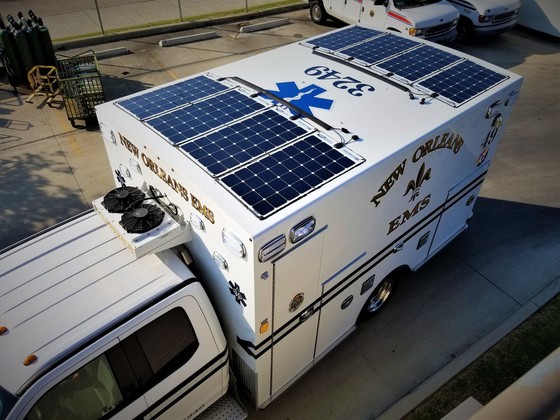
NEW ORLEANS – The City of New Orleans has reduced carbon monoxide emissions from its fleet of emergency vehicles by 147 tons in the past year by installing solar panels on the top of 16 ambulances.
The fleet of New Orleans EMS ambulances each have eight solar panels attached to the roof, and the solar energy collected maintains power to each ambulance’s vital systems while the vehicles idle.
The zero rpm idle reduction system allows operators to place the vehicles in park and shut off the engine while maintaining power to life support systems, temperature controlled medicine compartments, and telecommunications systems, according to New Orleans EMS spokesman John Fourcade.
For every hour an ambulance idles, it burns an estimated 1.5 gallons of fuel and puts about 35 miles worth of wear and tear on the engine.
The system has the long-term benefit of reducing the frequency of preventative maintenance, Fourcade said.
The reduction of idle time has also decreased the amount of fuel used since the first vehicles were retrofitted with the solar systems in June 2018.
So far, the city has saved 13.340 gallons of diesel fuel through the idle reduction program, amounting to a savings of $38,953.



















